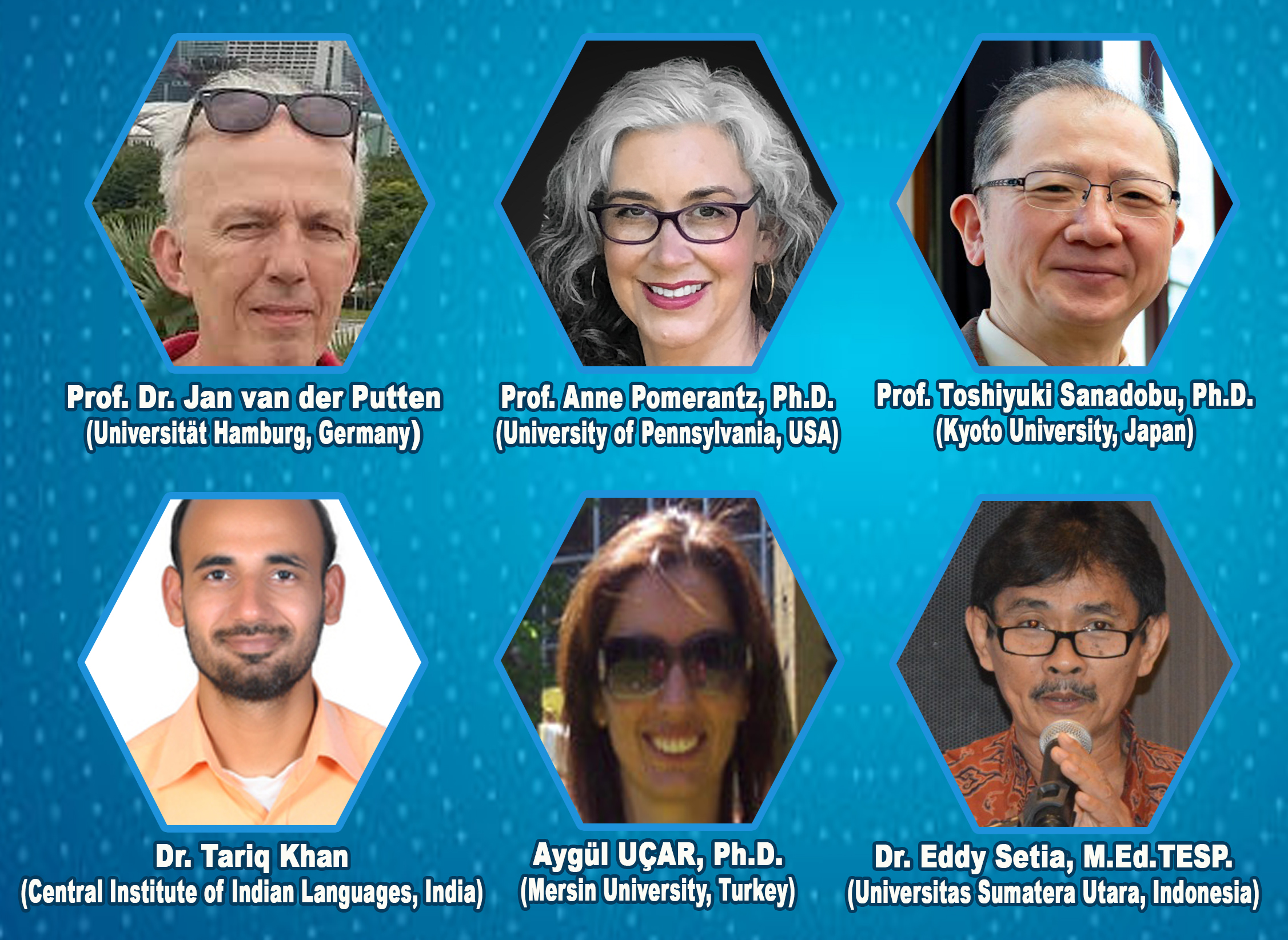Sumatera Utara
November 25, 2020 – November 26, 2020
Humour is a universal symptom to express something that is considered funny. However, everyone and society have a different perception about humour. Since the 16th century in Europe and around America, humour has been considered a part of human life. In the Asian region, humour is known in the early 19th century (Rahmanadji, 2007: 215). Unsurprisingly, at the beginning of 20th-century humour has become one of the research objectives from various studies. At that time humour entered a new era because it is very dominant in comedy theater and film. In Indonesia humour informally become a part of folk art, such as ludruk, ketoprak, lenong, wayang kulit, wayang golek, and so on. In fact, on the development of printed media in the early 1960s, the newspaper started a distinctive rubric for humour, like spoofs, anecdotes, caricature, and cartoons.
Besides, like arts, humour can also be used as a social reality representation and social criticism of particular circles. Moreover, humour now functioned as political communication media. Humorous talk linked to politics is considered a satire against the government and political opposition (Aryawangsa, 2014). Finally, political humour has transformed and evolved into a meme as the political expression of the popular public and technological information advancement and media social presence (Wadilapa, 2015:2; Mahadian, 2018:38).
Different perspectives are proposed by psychologists who view humour as an outlet capable of creating a healthy mentality and eliminating stress caused by the psyche and mental pressure. In this case, humour is used to process and create positive emotions that result in positive behaviour and act (Dewi, 2012:66; Wardhana and Kurniawan, 2018:86). Not only to process emotion, but psychologically humour can also function as a “sense of self” keeping. This is how somebody avoids problems and perceives them from a different point of view (Hasanar and Subandi, 1998:18). From a linguistic perspective, humour, in essence, is one of language play that causes someone to laugh or smile out of joy (Wijana, 2004:37). Humour discourse act as entertainment with a special term that is delivered informally. This language play can happen at any level like phonology, morphology, syntax, semantics, and discourse.Talk about humour from the perspectives of various fields of study is very significant right now. COVID-19 that affects many parts of the world near the end of 2019, has disruptively changed human activity. Panic and fear spread to every corner of the world. In this situation, humour is necessary to clear up the people’s heart and mind and build up body immunity. Besides that, at the end of this year, the Indonesian General Election Commission will conduct district head elections simultaneously.
Accordingly, the Linguistics Doctorate Program at Universitas Sumatera Utara Faculty of Cultural Study wishes to act and contribute for discussion and development of humour study by organizing International Conference called “The 2nd International Interdisciplinary Conference on Language Affairs (IICoLA)”. This conference will invite experts from several countries and different backgrounds to contribute to the thought of humour study.
Primary Speakers

Honorary Board
- Prof. Dr. Runtung Sitepu, S.H., M.Hum. (Rector, University of Sumatera Utara)
- Drs. Mahyuddin K.M Nasution, M.I.T., Ph.D. (University of Sumatera Utara)
- Dr. Budi Agustono, M.S. (Dean of Faculty of Cultural Sciences, University of Sumatera Utara)
International Board
- Prof. Dr. Jan van der Putten (Universität Hamburg, Germany)
- Prof. Anne Pomerantz, Ph.D. (University of Pennsylvania, USA)
- Prof. Toshiyuki Sanadobu, Ph.D. (Kyoto University, Japan)
- Dr. Tariq Khan (Central Institute of Indian Languages, India)
- Aygül UÇAR, Ph.D. (Mersin University, Turkey)
Editorial Board
- Prof. T. Silvana Sinar, M.A., Ph.D. (University of Sumatera Utara)
- Prof. Dr. Robert Sibarani, M.S. (University of Sumatera Utara)
- Prof. Dr. Ketut Artawa M.A. (Udayana University)
- Prof. Amrin Saragih, M.A., Ph.D. (Medan State University)
- Prof. Dr. Oktavianus, M.Hum. (Andalas University)
- Prof. Dr. Jufrizal, M.Hum. (Padang State University)
- Prof. Dr. I Dewa Putu Wijana, S.U, M.A. (Gadjah Mada University)
Committee
| Guarantor | Dr. Budi Agustono, M.S. (Dean) | |
| Vice guarantor | Dra. Heristina Dewi, M.Pd. (Vice Dean 2) | |
| Dr. Eddy Setia, M.Ed.TESP (Head of Program Study) | ||
| Chairman | Dr. Mulyadi, M.Hum. | |
| Secretary | Dr. Tasnim Lubis, M.Hum |